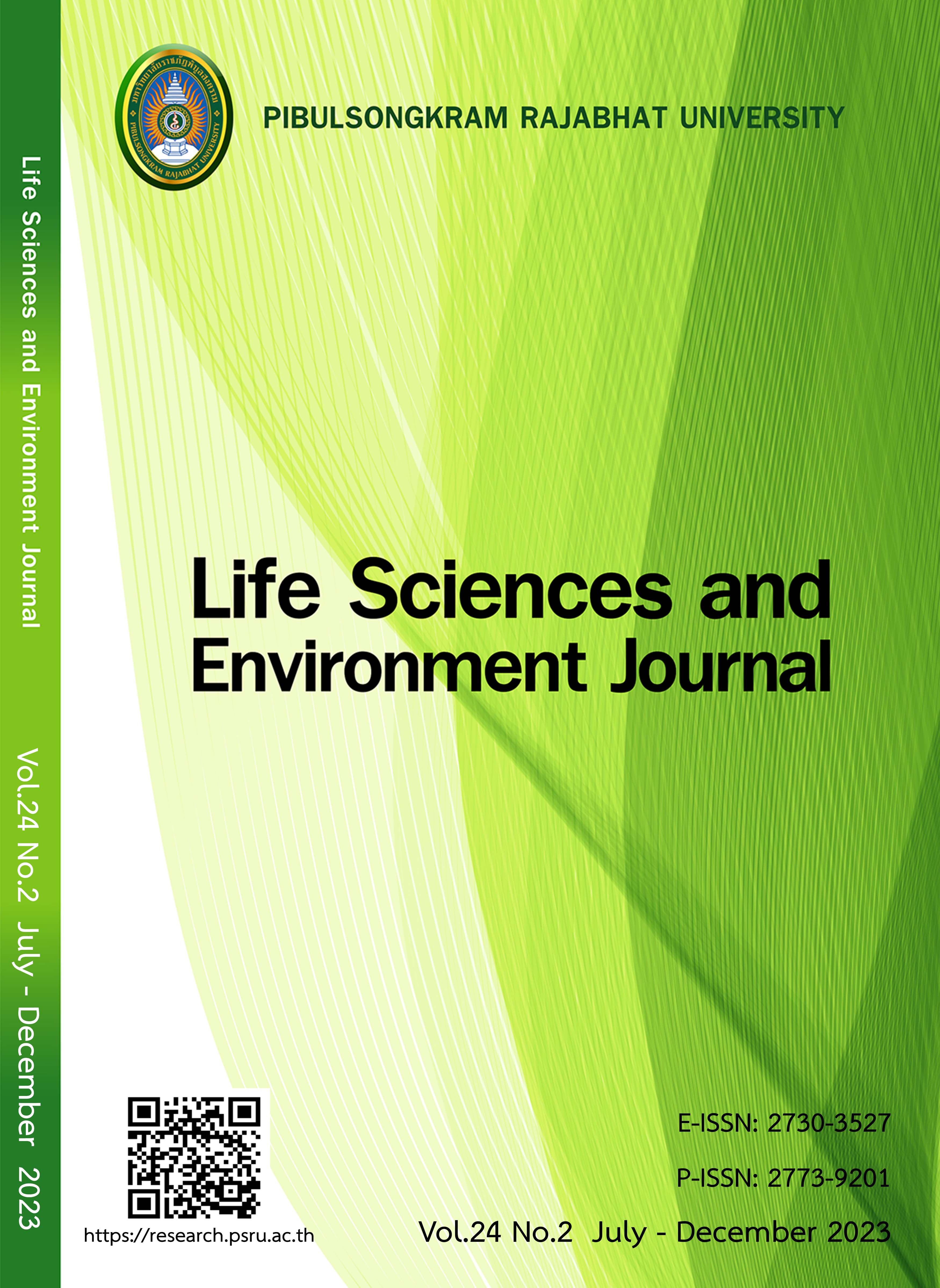OPTIMIZED PARAMETERS OF DRIED RED CHILI ON THE ROTARY DRYER PROCESS
DOI:
https://doi.org/10.14456/lsej.2023.21Keywords:
Jinda chili, Rotary dryer, Moisture , Factorial designAbstract
This study evaluated the performance of hot air drying in the fresh Jinda red chili and the design of this semi-automatic fluidized bed rotary dryer machine. The hot air system can bake more than 20 kilograms of chili, and the pressure of hot air, up to 50 millibars, can adjust the speed of the baking drum to make the chili more exposed to hot air. This machine has a maximum temperature of 140 degrees and 5 hours of residence time, which is safe. The principle of the machine is hot air removal to remove moisture in the product and air evaporates. The remaining heat is sent returned to the reusable pipeline to save energy from the start to the last loop, and the final moisture content of the product can be evaluated. The drying parameters studied were hot air velocities between 1-3 mater per second operating temperatures 70–90 degree Celsius and moisture drum drain lead time between 10-30 minutes. The 3k factorial experiment technique was employed to determine optimum variables. The multiple-response optimization revealed that the moisture of products is not fracture of dried chili, was 14.05 % wet basis, and 94.86% respectively not conducive to the growth of fungal pathogens that cause aflatoxins to cause cancer in the body, and a good product for cooking.
References
Akhijani HS, Rabhosseini A, Kianmehr MH. Effective moisture diffusivity during hot air solar drying of tomato slices. Research in Agricultural Engineering 2016;62:15-24.
Ali M. Chili (Capsium spp.) Food chain analysis: Setting research priorities in Asia. Shanhua, Taiwan: The world vegetable Center, Technical Bulletin; 2006.
Charmongkolpradit S, Triratanasirichai K, Srihajong N. Drying characteristics of chili using continuous fluidized-bed dryer. American Journal of Applied Sciences 2010;7(10):1300-1304.
Chokphoemphun S, Chokphoephun S. Investigation of drying behavior and color changes evaluation of chili in multi-layers cabinet dryer using image processing techniques. Thai Science and Technology Journal Thammasat University 2019;(2):764-775.
Jaekhom S, Namkhat A, Teeboonma U, Pumchumpol S, Witinantakit K, Boonthum E. Black Galingale Drying using Hybrid Techniques. Industrial Technology and Engineering Pibulsongkram Rajabhat University Journal 2022;4(3):266-284.
Jeentada W, Niyomcas B, Thaikul A. Experiment study on drying conditions of solar fish dryer with temperature controlled by the open-close ventilating system. The Journal of KMUTNB 2018;28(3): 525-536.
Kaleemullah S, Kailappang,R. Drying kinetics of red chilies in a rotary dryer. Biosystems engineering 2005;92(1):16-23.
Mihindukulasuriya SDF, Jayasuriya H. Drying of chili in a combined infrared and hot air rotary dryer. Journal of Food Science and Technology 2015;52(8):4895–4904.
Office of Agricultural Economics. Chili Research and Development, 2015, Available at: http://www.doa.go.th. Accessed January 15, 2023.
Othman MY, Ruslan MH, Sopian K. Drying of Malaysian capsicum annuum L. (Red Chili) Dried by Open and Solar Drying. International Journal of Photo Energy, 2013, 9.
Putranto A, Chen XD. S-REA (spatial reaction engineering approach): an effective approach to model drying, baking, and water vapor sorption processes. Chemical Engineering Research and Design 2015;101:135-145.
Rahman A, Saikia LC, Sinha N. Automatic generation control of an interconnected two-area hybrid thermal system considering dish– Stirling Solar thermal and wind turbine system. Renewable Energy 2017;105:41-54.
Sanhawat T, Pipatpaiboon N, Lamlerd, B. Rotary dryer of paddy whit closed-loop oscillatory heat pipe with check valves (CLOHP/CV) heat exchanger. Australian Journal of Basic and Applied Sciences 2015;9(1):218-223.
Sonsiri A, Radpukdee T. Effect of biogas volume flow rate and burner temperature on moisture content of organic fertilizer in a rotary drying process. Advanced Materials Research 2015;1105:305-310.
Suntivarakorn R, Radpukdee T. Multi sliding mode control with residual error estimation for a counter flow rotary dryer. Advanced Science Letters 2013;19(11):3263-3271.
Tagong K, Phanlek C, Jindarak S, Amatachaya P. Rotary dryer and roaster for fresh chili by using heat energy from LPG. Proceedings of an International Conference on Cogeneration, Small Power Plants and District Energy (ICUE 2016) Bangkok, Thailand, 14-16 September 2016;1-4.
Téllez-Pérez C, Mounir S, Montejano JG, Sobolik V. Impact of instant controlled pressure drop treatment on dehydration and rehydration kinetics of green Moroccan pepper (Capsicum Annuum). Procedia Engineering 2012;42:1877-7058.
Thamsala T, Mahayothee B. Effect of drying using a greenhouse solar dryer on the quality and bioactive compounds in cassumunar ginger (Zingiber montanum). 2018. Available at: http://ithesis-ir.su.ac. th/dspace/handle/123456789/2089. Accessed January 15, 2023.
Thanaraj T, Samarajeewa U, Lanka S. Development of a rotary solar hybrid dryer for small-scale copra processing. Topical Agriculture Research 2004;16:305-315.
Downloads
Published
How to Cite
Issue
Section
License
Copyright (c) 2023 Life Sciences and Environment Journal

This work is licensed under a Creative Commons Attribution-NonCommercial-NoDerivatives 4.0 International License.
Each article is copyrighted © by its author(s) and is published under license from the author(s).










